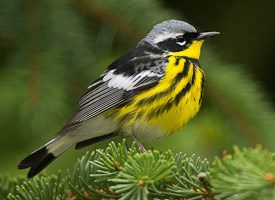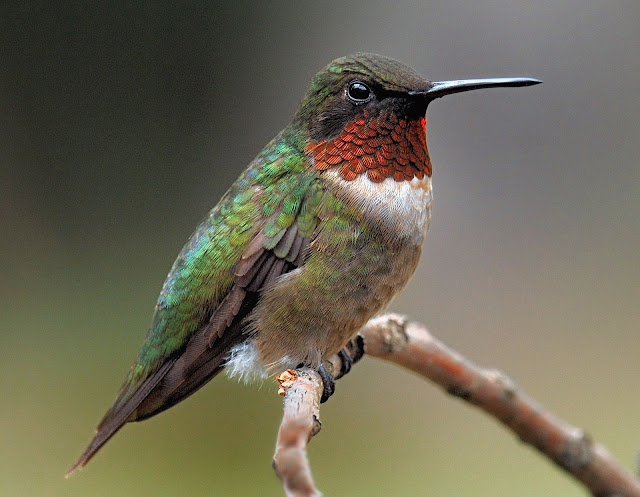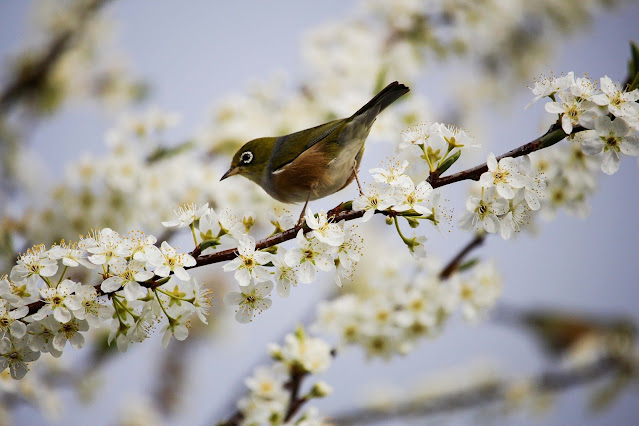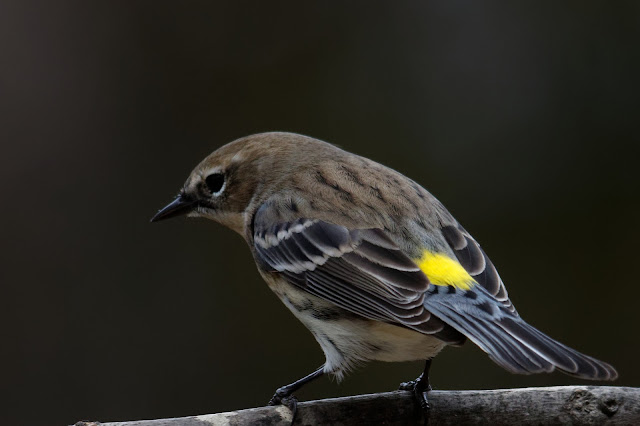Spring has sprung! Gardeners and Conservationists are all jumping for joy!
But wait a minute, before you get all excited about getting your hands
dirty and your gardens in shape, let's take a few minutes to think and see
what Mother Nature would have us do instead!
Many gardeners are just itching to get their gardens cleaned up and looking
tidy and I can't say that I blame them. After a long cold winter,
making things (garden beds) look nice is a job that many gardeners love to
do. Why wait? Well, would it help for you to know that many bees
are still hibernating within the leaves and debris that is in your
garden? We have a serious problem with declining bee populations, so
anything you can do to help them would be a welcome thing to do.
I'm not advocating that you leave your gardens in a messy state, but rather
wait just a few weeks before getting to the "mess". That will be time
enough for the bees to wake up from their winter slumbers and start looking
for those first dandelions for food.
That brings up to the second thing that gardeners should really stop doing
in the springtime. Did you know that dandelions are one of the first
spring flowers to come up in your gardens? Well they are and they are
full of good nutrition for the bees who wake up hungry. Leave those
flowers alone, let them bloom and welcome the sight of those bees that are
doing the hard work! If you don't want a proliferation of dandelions
in your lawn, just watch the flowers and when they have all been pollinated,
and start to produce their seeds heads, go out then and cut them off and
dispose of them so no seeds are flying around the garden! The parent
plant will produce another flower for the bees and then you can do the same
thing again. Pluck the spent flower head before it sends it's seeds
everywhere. This way you will be providing food for the bees without
dandelions taking over your gardens. Easy peasy!
Spring comes on quickly, so you need to be ready for all kinds of wonderful
things that will happen during this time. Number three on my list of
things to do (or not do) is check for migrating birds in your area.
Hummingbirds are the Number One bird everyone is looking forward to
seeing. They too will come to your gardens hungry from their travels
north! You can check out this
Hummingbird Migration Map
to see when they will arrive in your area!
So what can you do to help those Hungry Hummers?
Have your hummingbird feeders out a week or so before they are due in your
area. Keep them clean and available with fresh nectar that is changed
weekly! Why do you need to change the nectar? Well as with
anything left out to the elements, nectars can go "bad". That means
they will get moldy and rancid. The idea is to feed those hungry
hummers, not to harm them! So clean fresh nectar is a MUST!
(p.s. nectar is simply four parts water to one part sugar, NO DYES) In
the early days of their migration you can make up nectar and keep it in the
fridge. Just put a small amount in the feeders until you know they
have found you! Once you know they are around, then you can fill up
those feeders to a cup of nectar and again keep the nectar fresh!
Ruby Throated
Hummingbird
Migrating Birds, what you need to know!
Along with the bees, migrating birds are also having "human"
problems! What are those, you might ask? Well in large urban
areas where skyscrapers and really large windows are the norm, many
migrating birds fly into those windows and drop like stones onto the
pavement below! They suffer broken necks, wings and sometimes are just
so stunned that they don't recover. This is truly a sad situation for
birds that fly so far to get to their northern nesting areas. Large
windows are almost invisible to the birds, so their tracking is off!
How can we help them? It's easy, first is awareness and then there is
something as easy as placing "cling decals" on the windows so that they will
see them and avoid crashing into them. You can easily purchase these
decals in many styles, some are transparent to the human eyes or others are
decorative and produce an ambience in your homes as you look out those
windows. It's a small price to pay for the benefit of the birds and
possibly for you to enjoy them as they make their homes in your
yards.
Did you know that there are several species of migratory birds in North
American? Quote taken from
All About Birds.org:
-
 "Long-distance migrants typically move from breeding ranges
in the United States and Canada to wintering grounds in Central and
South America. Despite the arduous journeys involved, long-distance
migration is a feature of some 350 species of North American
birds."
"Long-distance migrants typically move from breeding ranges
in the United States and Canada to wintering grounds in Central and
South America. Despite the arduous journeys involved, long-distance
migration is a feature of some 350 species of North American
birds."
Learn More About Bird Migration
If you want to know more about Bird Migration, there is a wonderful
website by Cornell University that follows and updates information on
all kinds of migratory birds! You can find it
RIGHT HERE!
This is excellent reading material for any bird enthusiast!
Don't stop with dedicated Birders, get your young ones involved in
becoming Bird Ambassadors, they will learn and do so many things in a
fun and really rewarding way.
There are great books available for children and adults too! Easy
to read and understand, they will teach you everything you need to know
and look for when searching the skies and yards for those feathered
friends.
Yellow Rumped Warbler
Happy Easter to Everyone!
Note: The author may receive a commission from purchases made using links found in this article. “As an Amazon Associate, Ebay (EPN), Esty (Awin), and/or Zazzle Affiliate, I (we) earn from qualifying purchases.”





























